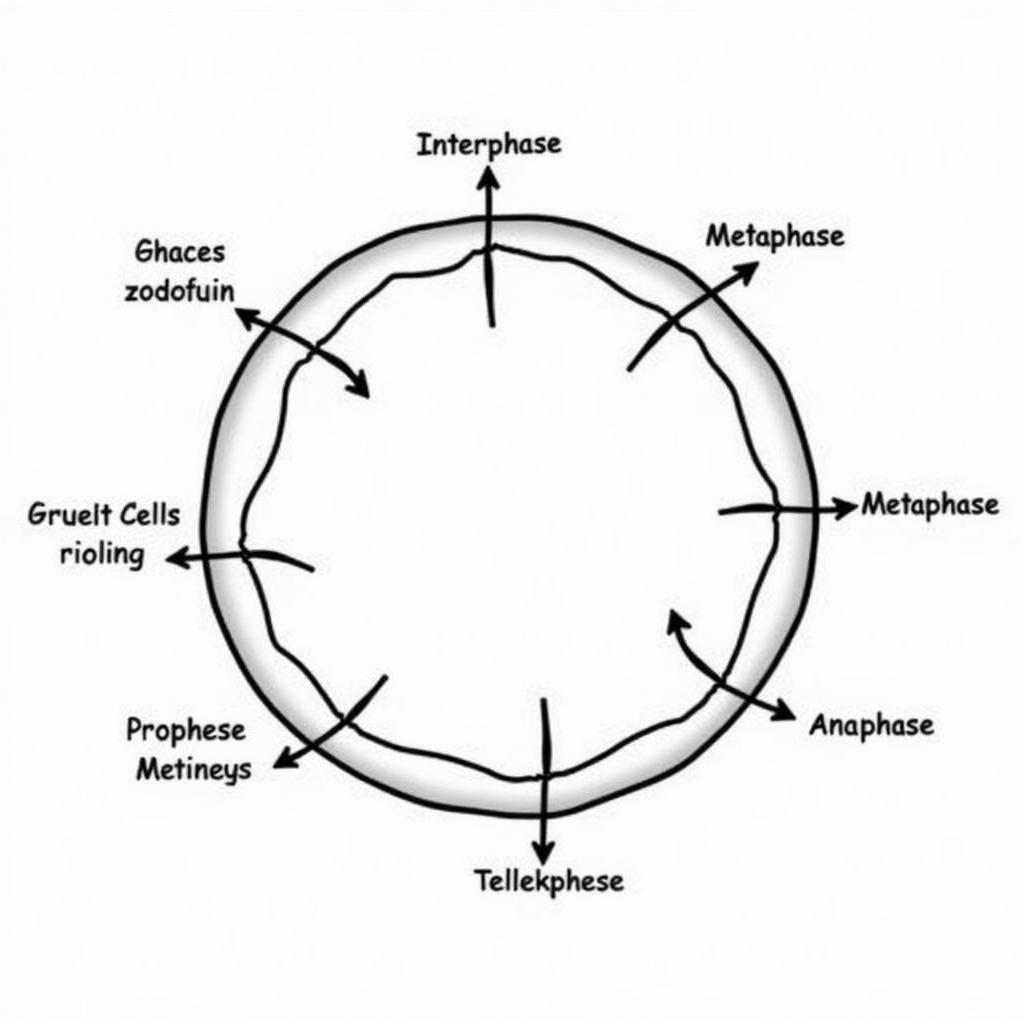The Cells Of A Horse, like all living organisms, are the fundamental building blocks of life. These microscopic units perform a vast array of functions, from carrying oxygen throughout the body to repairing damaged tissues. Understanding the structure and function of these cells is crucial for anyone involved in equine care, from owners and riders to veterinarians and researchers. Let’s delve into the fascinating world of equine cellular biology.
The Basic Units of Life: An Overview of Horse Cells
Horse cells are eukaryotic, meaning they possess a membrane-bound nucleus that houses the genetic material (DNA). This characteristic distinguishes them from prokaryotic cells, like bacteria, which lack a nucleus. Within the cell membrane, a variety of organelles perform specialized functions. For example, mitochondria generate energy, while ribosomes synthesize proteins. These complex interactions within each cell contribute to the overall health and function of the horse. Much like building blocks, if one type of cell is malfunctioning, it can affect the entire system.
Just as horse blocks provide essential minerals and nutrients for the horse’s overall well-being, individual cells require specific components to function properly. This includes adequate hydration, a balanced supply of nutrients, and a healthy environment.
Types of Horse Cells: Specialized Functions for a Complex Organism
There are many different types of cells within a horse’s body, each specialized for a particular role. Muscle cells, for instance, are responsible for movement, while nerve cells transmit signals throughout the body. Red blood cells carry oxygen, and white blood cells fight infection. This specialization allows the horse to perform a wide range of complex functions, from running at high speeds to maintaining a stable internal environment.
Understanding Equine Blood Cells: The Lifeline of a Horse
Blood cells are a vital component of the horse’s circulatory system. Red blood cells, packed with hemoglobin, transport oxygen from the lungs to the rest of the body. White blood cells play a crucial role in the immune system, defending against infection and disease. Platelets are involved in blood clotting, preventing excessive bleeding in case of injury. These cells are constantly being produced and replenished, ensuring the horse’s continued health and vitality. Just like how we might consider light therapy for horses for various health benefits, understanding the role of each cell type is crucial for addressing specific health concerns.
“Regular bloodwork is essential for monitoring a horse’s overall health,” says Dr. Emily Carter, DVM, specializing in equine internal medicine. “Analyzing the different types and numbers of blood cells can provide valuable insights into potential underlying issues.”
The Cell Cycle: Growth, Repair, and Renewal
Cells in a horse’s body are constantly undergoing a cycle of growth, division, and renewal. This process, known as the cell cycle, is essential for growth, tissue repair, and overall maintenance of the body. The cell cycle is carefully regulated to ensure that cells divide in a controlled manner. Disruptions in this process can lead to uncontrolled cell growth, potentially resulting in tumors or other health problems.
Similar to how understanding the ingredients in equinity horse supplement ingredients is crucial for their well-being, understanding the intricacies of the cell cycle and its role in equine health is paramount. When issues arise, it is crucial to address them promptly, just as with how to treat protein bumps on horses.
 The Horse Cell Cycle: Stages of Growth and Division
The Horse Cell Cycle: Stages of Growth and Division
The Role of Nutrition in Cell Health
Proper nutrition is crucial for supporting healthy cell function in horses. A balanced diet that provides adequate protein, vitamins, and minerals is essential for cell growth, repair, and overall health. Just as vitement horse supplements can provide essential nutrients, a well-rounded diet ensures that cells have the building blocks they need to function optimally.
“Just as a house needs strong foundations, a horse’s cells require the right nutrients to thrive,” explains Dr. Sarah Mitchell, PhD, an equine nutritionist. “A balanced diet is crucial for supporting cell health and overall well-being.”
Conclusion: The Foundation of Equine Health Lies Within the Cells of a Horse
The cells of a horse are the foundation upon which its health and well-being are built. Understanding the complex workings of these microscopic units is crucial for responsible horse ownership and care. By providing a balanced diet, appropriate exercise, and regular veterinary checkups, we can support the health of these vital building blocks and ensure the overall well-being of our equine companions.
FAQ
- What are the main types of cells in a horse?
- How does the cell cycle affect a horse’s growth and repair?
- What role does nutrition play in horse cell health?
- How can I support the health of my horse’s cells?
- What are the key differences between horse cells and human cells?
- What are some common diseases that affect horse cells?
- How can veterinarians assess the health of a horse’s cells?
You can also explore related articles on our website, such as articles on horse nutrition and equine health management.
For any assistance or further inquiries, please contact us: Phone: 0772127271, Email: [email protected] or visit us at QGM2+WX2, Vị Trung, Vị Thuỷ, Hậu Giang, Việt Nam. Our customer service team is available 24/7.